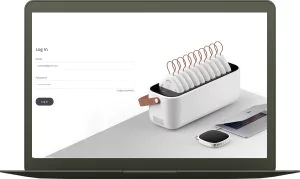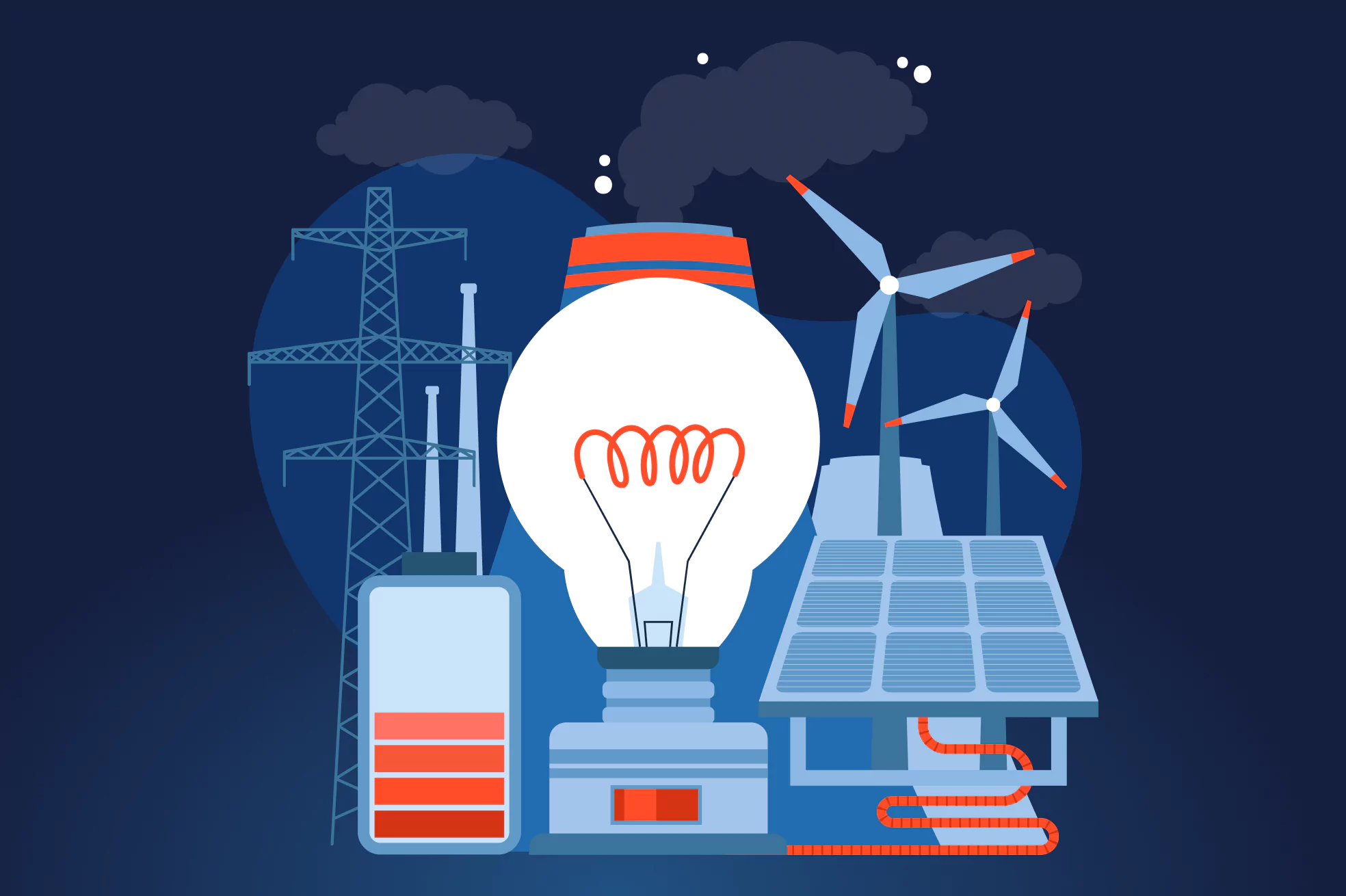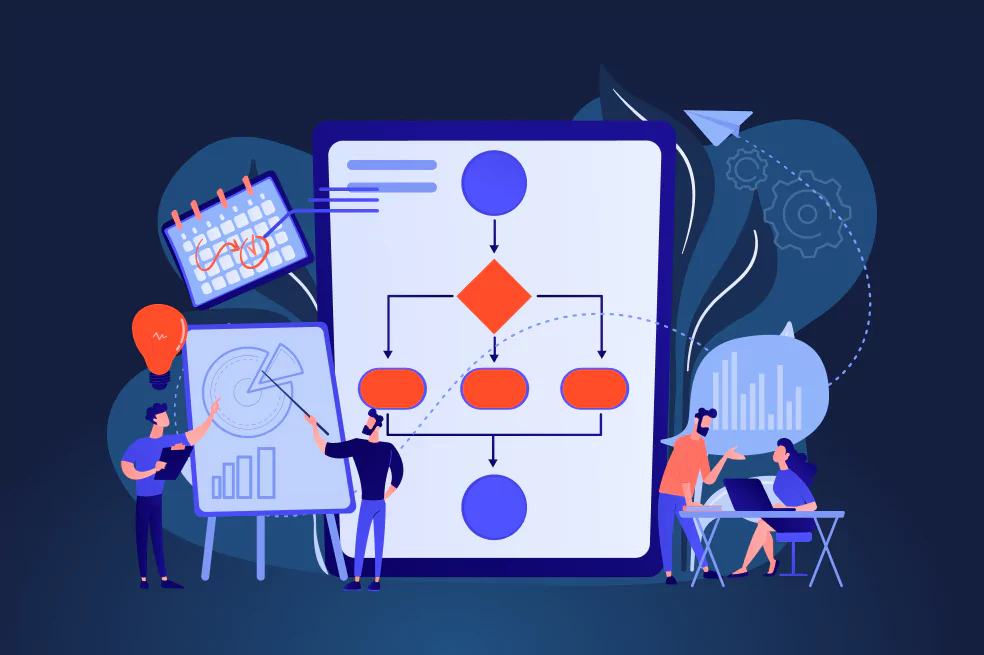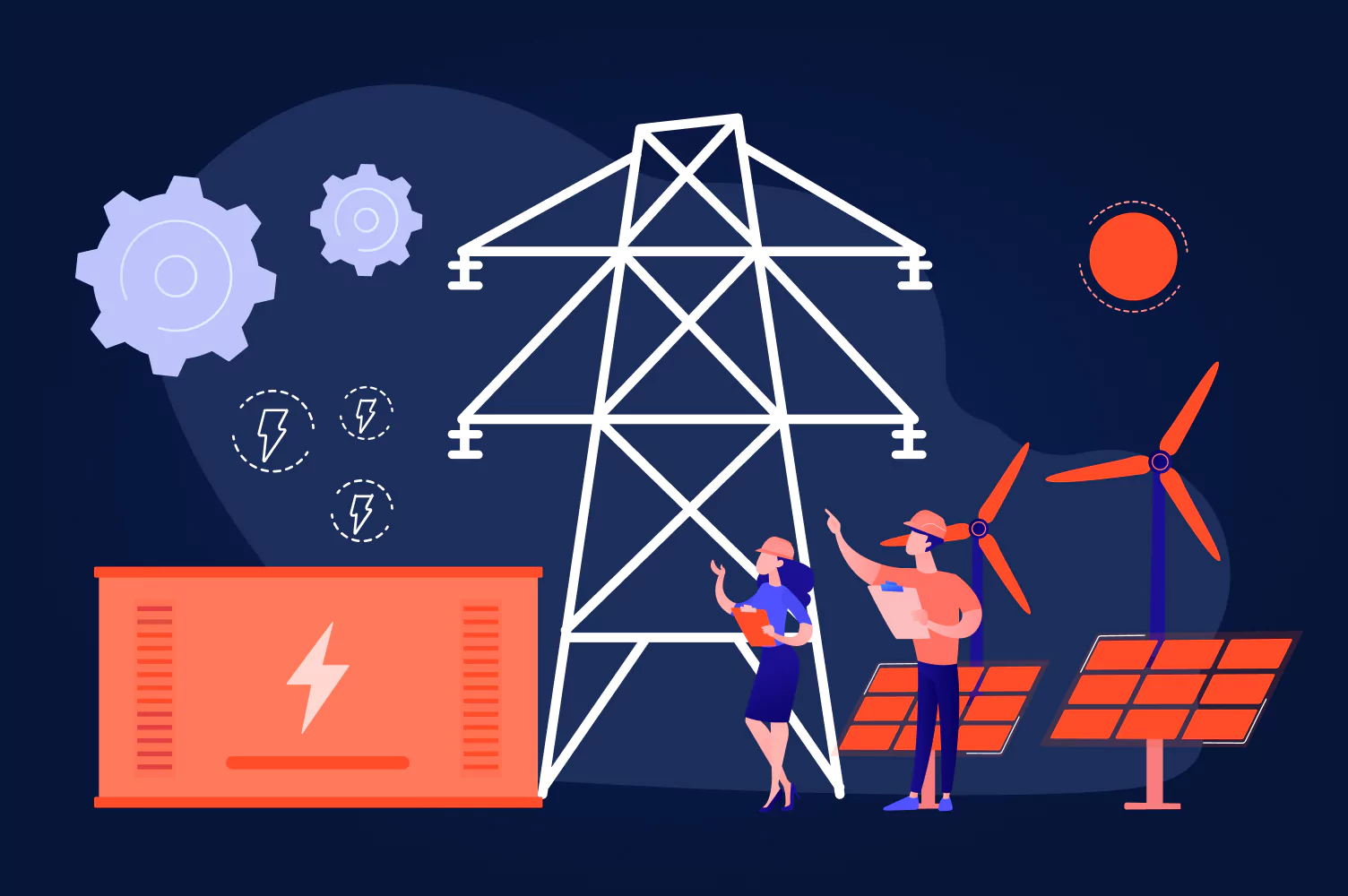When you’re working on a digital project that involves Internet-of-Things (IoT) technology, sooner or later someone from your tech team will come up to you and say some weird words and numbers, and ask which of these protocols do you want to use. First of all, you need to make sure that your software developers haven’t been sitting in direct sunlight for too long and have no sunstroke. The second thing you have to do is to eventually learn about IoT communication protocols.
By knowing what IoT protocols to use, you can achieve better results with your project. Selecting a particular set of protocols defines how your IoT product will work and meet your business goals. That is why the JatApp team will provide you with a guide on IoT communication protocols, so you’ll be able to speak the same language with your software developers.
Learning about IoT protocols will be a tough task, but we’ll break the concept into small pieces to make it easier to get.
Cool, calm, and connected IoT devices
Getting IoT devices connected and working seamlessly is one of the main purposes IoT communication protocols intend to pursue. There are two main ways how IoT devices can connect: via gateways or with built-in functionality.
Speaking about gateways, this type of hardware is used to connect IoT devices that can’t be linked up to the cloud server or don’t have their own Internet Protocol (IP) address, so there’s no way the cloud can find them. Gateways connect IoT devices and then direct the received data to the cloud server. Besides, gateways help to increase the speed of data exchange and create an additional security layer that is always necessary.
If your IoT fleet includes built-in connectivity, you still have to decide what protocols to use. Usually, the distance between the devices and server is the main factor in this respect, but we’ll talk about this a little bit later. For now, let’s focus on two major types of networks that are actually classified according to the range of IoT devices connectivity: short range and wide area networks.
Low-power short range networks
It’s natural that short-range networks are good for small environments like homes, offices, and so on. Such networks don’t require much battery power and are usually inexpensive. There are several common short-range IoT networks protocols:
- Bluetooth. Named after the viking King Harald Blue Tooth, who managed to gather single Danish tribes into one powerful kingdom. Like the great viking, the protocol brings together several other communication protocols that provide a high-speed data exchange within 10 meters.
Two great viking’s runes make a logo
- NFC. Near-field communication is used for connecting two devices within a distance of no more than 4 cm. Despite the low speed of connection, the network is easy to maintain.
- Wi-Fi/802.11. Oh well, this one doesn’t really require an explanation. Wireless Fidelity network is a good option for homes and small offices, but it eats quite a lot of power, while connectivity isn’t necessarily very good.
- Z-Wave. This type of network doesn’t have anything to do with the Russian symbol of military aggression against Ukraine, as z-waves are just low-power radio frequencies that enable one IoT item to connect with another.
- Zigbee. Such networks aim at creating high-speed communication environments within a small area. Zigbee is commonly used for private networks powered with low-energy digital radio connection.
Low-power wide range networks (LPWANs)
LPWANs orients at networks that are distributed across areas of 500 meters and more. These networks are also low-power and actually represent the major part of IoT environments:
- 4G LTE IoT. High capacity and data transfer speed makes this network a natural fit for IoT solutions that require real-time data exchange.
- 5G IoT. It’s not available yet, but the network is the wave of the future that is expected to bring data transfer speed and network capacity to a new level. With this network type being adopted, many innovation opportunities will arise.
- Cat-0. A basic low-cost network that will replace 2G solutions.
- Cat-1. That’s the next level of Cat-0, perfect for devices that use voice recording or browser interface.
- LoRaWAN. It’s a mobile long-distance network operating with low-power batteries, so it is a universal solution that can fulfill the purpose of many IoT projects.
- LTE Cat-1 M1. A network that has been invented to cut costs and increase productivity of IoT networks, which is why it’s quite popular with many IoT products.
- Narrowband/Cat-M2. If you don’t have enough budget to involve gateways in your IoT network, narrowband communication is for you.
- Sigfox. In fact, it is a worldwide IoT platform provider that can help you cut the costs on your IoT infrastructure by establishing low-power long-distance wireless connection within your network.
Layers to get protocols in order
Any IoT product consists of several layers that require different protocols in place. These layers are usually the following: application, transport, network data link, and physical.
Application
The application layer focuses on establishing a connection between user interface and IoT device. There are such protocols as:
- AMQP. Advanced Message Queuing Protocol creates messaging interoperability within the IoT network. This protocol is good enough to serve connectivity within large networks of industrial IoT.
- CoAP. Constrained Application Protocol is used for IoT devices that have a limited range of connectivity. That’s why it won’t be a good decision for any IoT project.
- OCPP 2.0 Open Charge Point Protocol is an IoT communication protocol created for making electric vehicles (EV) charging stations connected. JatApp team used this protocol for building EV charging points monitoring platform to ensure an uninterrupted connectivity of the client’s charging stations. Owing to OCPP 2.0 and efforts of our development team, 68 businesses around Europe use the monitoring platform to manage their charging stations infrastructure.
EV charging stations monitoring platform user interface
- DDS. Data Distribution Service is a universal protocol that is equally good for small IoT items and large networks with lots of connected equipment. The protocol is simple to deploy, while it is as reliable as any other IoT communication protocol within the application layer.
- MQTT. Message Queue Telemetry Transport protocol works with small, yet power-efficient IoT devices with low bandwidth that ensures strong connectivity within small and middle-range areas. Since the protocol aims at delivering real-time data from device to device, JatApp team used it for developing a platform for autonomous powerbank rental. By adopting MQTT, our development team managed to ensure that in case any of powerbanks lose connection or leave the connectivity area, the client will be able to see the connection loss instantly.
Power banks with a connected charging station
Transport
Transport layer protects data within the whole network and secures its movement back and forth. There are two major protocols to date:
- TCP. Transmission Control Protocol is the major protocol for connecting IoT devices through the Internet. The protocol breaks large data sets into small chunks to increase the speed of data exchange.
- UDP. User Datagram Protocol is a similar protocol for the transportation layer, but it is particularly applicable to IoT networks that require lossless connectivity.
Network
This layer helps to maintain connection between IoT devices and router/gateway.
- IP. Internet Protocol is a well-known protocol for connecting and identifying devices via Internet connection.
- 6LoWPAN. This protocol works with low-power devices within a wide area network, which is why it is especially important for connected devices with a limited data processing capacity.
Data link
Data link layer is necessary for data transition within the system’s architecture and safeguarding data from errors within the physical layer. The two great protocols are responsible for that:
- IEEE 802.15.4. It is an international radio standard for low-energy wireless connection. This standard is compatible with such protocols as Zigbee and LoRaWAN.
- LPWAN. The protocol is actually a summary representation of low-power wide-area networks rolled into one. As a result, we have another universally applicable IoT communication protocol.
Physical
This layer is necessary for connecting IoT devices within their environment. Naturally, there are many ways to go:
- BLE. Bluetooth Low Energy is a protocol that reduces expenses and energy consumption for connecting devices via Bluetooth protocol. The protocol is becoming a centerpiece of consumer IoT due to its simple maintainability and low cost.
- Ethernet. Actually, it is a rare beast that uses a wired connection for low-power and inexpensive IoT solutions.
- LTE. Long-term evolution protocol is commonly used for mobile devices. It increases the quality and speed of connection within wireless networks. LTE is especially good for IoT projects with a high dependency on multicast and broadcast data streams.
- NFC. Near-field communication protocol uses electromagnetic fields to connect two devices within a very short distance. Actually, your device with Apple Pay/Android Pay built-in uses this protocol. Consequently, you can use it in similar IoT solutions.

- PLC. Powerline Communication is another dinosaur that involves the use of cables to transfer data to control an IoT device.
- RFID. Radio Frequency Identification protocol uses electromagnetic fields to detect tags that represent a particular piece of hardware or any other device.
We also have Wi-Fi, Z-Wave, and Zigbee protocols, but they actually perform functions we’ve covered in the section devoted to the IoT communication networks. “Don’t repeat yourself” philosophy applies not only to software development, but to writing informative articles as well, don’t you think?
What protocols to pick?
We have discussed the most prominent IoT communication protocols and tried to mention what IoT projects they are best for. Anyway, you may still keep fidgeting with a pen in your hand and keep thinking about what protocols to use for your IoT project. There are several selection criteria that can guide you:
- Power. If your IoT devices require much electrical power, you’ll need to pick protocols that can ensure power supply in the long run in order to prevent your network from falling apart after several hours of intense performance.
- Connectivity. Think about the importance of data exchange within your IoT network. Will your product suffer a loss and customers go ballistic if the data flow is a little bit faster than a wounded slug?
- System architecture. The architecture of your system may have its own specifics and nuances that force you to select this or that set of protocols. Consult your tech team and listen to their opinions in this respect.
- Budget. Money can’t buy you love, but they can buy you the IoT network you desire. If you have limited budget, low-cost protocols are a natural priority for your project.
- Physical barriers and location. The location of your IoT network can influence the choice of protocols in quite an obvious way. If your connected devices should work in environments that are stuffed with thick walls, objects, buildings, mountains, and such, you have to look for protocols that can guarantee you a seamless performance and good connectivity despite all these hurdles.
Survive through protocol boredom
IoT communication protocols are by far not the most exciting thing in the world. When you forget something, you can always get back to this guide and clarify the issue that concerns you. Moreover, JatApp can provide you with a professional tech team who have been working on IoT projects every day for seven years. Our experts can deal with any IoT-related issue and deliver a product that satisfies your business needs.
Tell us about your project. We’ll contact you as soon as possible.









